Cyrus and the permanent destruction of the Kadusians!
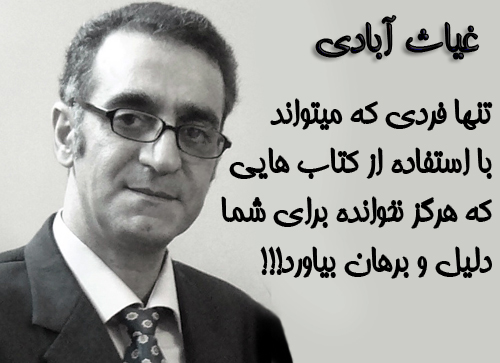
Mr. Ghiyasabadi wrote in one of his writings with a bold title:
Human sufferings 145: Great blindness and the eternal destruction of the Caduceus!
When a person reads this and sees the introduced sources, he thinks that Cyrus the Great really killed all the Cadusians and destroyed their houses so much that there is no more name of them.!!
In none of the introduced sources is there any mention of the destruction of the Cadusian civilization by Cyrus. Even the war of Cyrus with the Cadusians is not reported! It is strange that the sources introduced by Mr. Ghiyathabadi are about Achaemenid Ardeshir II and have nothing to do with Cyrus.. Interestingly, the sources refer to ending this unrest with peace.
By examining the sources, we find that the Cadusians were always one of the important inhabitants of Iranian civilization and even had a place in the Achaemenid army..
taken from: The untold stories of ancient Iran
the writer: Mohammad Mehdi Jokar
Mr. Ghiyasabadi wrote in one of his writings with a bold title:
Human sufferings 145: Great blindness and the eternal destruction of the Caduceus!
When a person reads this and sees the introduced sources, he thinks that Cyrus the Great really killed all the Cadusians, including the Gilkas and the Central Lars, and destroyed their houses so much that there is no more name of them.!!
He continued:
Another country and civilization that was destroyed forever by the hand of Cyrus the Great and the invasion of his Persian army was the brilliant civilization of ancient Gilan, that is, Kadusi / Kadusian, which was located in the southwest of the Caspian Sea / Mazandaran Sea.. At least once, the Caduceus tried to regain their independence and identity, but they faced the suppression of the Achaemenids and disappeared from history forever..
The Cadusians were destroyed forever by Cyrus! But this destroyed people, thinking of Ghiyasabadi, they raised their heads from nowhere and rebelled at least once more? How did they rise again after they were destroyed?
Anyway, according to Ghiyasabadi's words, after the rebellion, they faced the massacre of the Achaemenians and disappeared from history forever?! Is it really so? Lies and deceit are even higher than this; I have said this clearly so that it is a clear sign of spreading lies by someone who condemns the liars of Cyrus..
[The sources mentioned by Mr. Ghayasabadi are as follows:
History of Plutarch, section of Ardashir, paragraphs 28 and 29; Diodorus Sisili, Iran and the Ancient East in the Historical Library, translated by Hamid Bix Shorkai and Ismail Sengari, Jami Publications, Tehran, 2004, page 149; Moshir al-Doula Pirnia, History of Ancient Iran, Volume 1, pp. 1128 to 1131.]
He wrote: Cyrus went there and destroyed the Caduceus civilization.
First of all, there is no mention of the destruction of Kadusi civilization in any of the introduced sources, and this is one of the creations of Mr. Ghiyasabadi..
Second, he says that after the rebellion and after the harsh suppression of the Achaemenids, the Kadusians disappeared from history forever.!
First of all, we should know which Gilani rebellion is meant by Ghiyasabadi? From what is presented in the sources, it is clear that this rebellion was during the time of Achaemenid Ardeshir II, all the sources of Ghiasabadi state this. But there was another rebellion, as it appears from the Biston inscription, in which the Cadusians rebelled with the Parthians. (look at: Biston inscription, column 2, paragraph 16)
In the Biston inscription, there is no sign of destruction, because if all the Parthians were destroyed, it would not make sense for them to submit. These points can also be seen from Dariush's behavior in other rebel cities.:
۱- Only the rebel leaders are killed
۲- No city would be destroyed
۳- Massacre of ordinary people did not happen.
[See for more information: The riots of Darius's time, popular uprisings or mafia revolts?!]
But let's go back to the rebellion of Ardeshir II, which is also considered by Mr. Ghiyathabadi; As it turns out, their arguments are all related to the rebellion of Ardeshir's time, but do Ghiyasabadi's sources really say that the rebels were so suppressed by the anger and hatred of the Shah's troops that no trace of them remained in history?!
So let us quote from the sources cited by Hazrat Ostad Ghiyasabadi :
"The Kadusians rebelled during the time of Ardashir II, like many states … Ardeshir headed an army composed of 300,000 infantry and 10,000 cavalry to quell these rebellions… The land of Cassian is mountainous and always cloudy… Due to the famine in this land, the Shah suffered from a lack of provisions, to the point where the soldiers were forced to eat the horses and donkeys of the army.….. The Cadusians had two kings who camped separately from each other. open arrow (= Ardeshir agent) He drew a plan and after presenting it to Ardeshir, he secretly went to one of the two mentioned kings and sent his son to the other..
Each of them said to the king who had gone to him, "The other king has sent someone to the king and entered into negotiations, and if you want not to be deceived, make sure that you have entered into negotiations with the king before the other.". I will help you with all my strength." The mentioned kings believed the words of Tiribaz and his son and sent messengers to Ardashir with him and his son.…..Finally, Tiribaz and his son came with the messengers of the Kadusi kings and a peace was concluded.
ن.ک. Plutarch, Ardeshir stanzas 28 and 29 + Moshir al-Dawlah (Pyrenees) جلد۲/۸۱۸
All that the sources say is what has been said above. But Ghiyasabadi narrates the story of the rebellion and uses his story telling talent and adds that the Achaemenids destroyed the people of Kadoussi forever.!
It should be added that in Pirnia's version, the speech in question is quoted from Plutarch's book, Ardeshir 28-30, and Ghiyathabadi also presented the same address.. However, the online version of Plutarch's book mentions the story of the conquest of Gorgan in paragraph 24 of the Ardashir section
To clarify the issue, see the online text of Plutarch's book, section Ardeshir, section 24 :
There being two kings amongst the Cadusians, and each of them encamping separately, Teribazus, after he had made his application to Artaxerxes and imparted his design to him, went to one of the princes, and sent away his son privately to the other.
So each of them deceived his man, assuring him that the other prince had deputed an ambassador to Artaxerxes, suing for friendship and alliance for himself alone; and, therefore, if he were wise, he told him, he must apply himself to his master before he had decreed anything, and he, he said, would lend him his assistance in all things.
Both of them gave credit to these words, and because they supposed they were each intrigued against by the other, they both sent their envoys, one along with Teribazus, and the other with his son. All this taking some time to transact, fresh surmises and suspicions of Teribazus were expressed to the king, who began to be out of heart, sorry that he had confided in him, and ready to give ear to his rivals who impeached him.
But at last he came, and so did his son, bringing the Cadusian agents along with them, and so there was a cessation of arms and a peace signed with both the princes.
See paragraph 24: http://www.bostonleadershipbuilders.com/plutarch/artaxerxes.htm
also:http://ebooks.adelaide.edu.au/p/plutarch/lives/chapter66.html
As you can see, in the online text of Ardeshir's book, there is a reference to ending the rebellion with peace, without even a brief reference to the occurrence of war..
But the peak of Mr. Ghiyasabadi's lying or perhaps ulterior motives is where he referred to the book of Diodor Sisley in support of his speech..
His address is:: Diodorus Sisili, Iran and the Ancient East in the Historical Library, translated by Hamid Bix Shorkai and Ismail Sengari, Jami Publications, Tehran, 2004, page 149;
But what we saw in this address is not only never a sign of what this researcher says, but as it comes below, it is clear that he has publicly falsified history; The text of page 149 of the said book is given below without any change, conversion, destruction or distortion :
Paragraph 33 of the second book / page 149 of the book : During the reign of Arte (= Shah Mad, about a century before the appearance of Cyrus the Great mmj)A great war broke out between the Medes and the Cadusians . Such was its origin: A Persian named Parsud - who was a prominent and great man because of his courage, foresight and other qualities.- Shah's love and friendship (= Earth)drew him to himself in such a way that the king got the most influence from him during the consultation. Parsud was offended because of the sentence that the king had issued against him, along with three thousand infantrymen and one thousand cavalrymen, he took refuge with the Kadusians and married his sister to one of the most prominent men of this land.. This rebel stirred up this land to gain its independence and was chosen as the leader. After learning that countless forces have been sent against him, he called all the Cadusians to fight and placed his army at the entrance gate of this land. – He was accompanied by an army of no less than 200,000 people- set up. He fought with the king, Arete, who came to the war with 800 thousand soldiers, and killed more than 50 thousand of them and drove the rest from the land of the Cadusians.. Parsud, who won everyone's praise with this victory, was elected king by the natives. Since then, he repeatedly attacked and destroyed Madh. Parsud achieved a high reputation and at the end of his life, he gave an official oath to his successor that he would always have the hatred of the Kadusians against the Medes, and he vowed that if one day his descendants and the entire Kadusians come out of peace and hunger with the Medes, they will be cursed and tormented. become divine. This is because the Cadusians were always the enemies of the Medes and never obeyed their kings – Until Cyrus took the empire from the Persians- They didn't care.
I leave it to the readers of this article to judge what is actually and practically from the book "Iran and the Ancient East in the Historical Library" written by Diodor Sisili, page 149, with the introduction of Dr. Shirin Bayani, in comparison with the clear distortions and clear lies of Mr. Ghiyathabadi. Without wanting to add an explanation, we will say more than this that Ghiyasabadi has distorted, destroyed and falsified history in most of his writings out of hatred and hatred and enmity and intention that he has or has found for ancient Iran and with impudence and cowardice. All claimants are also truthful!
Indeed, it is not mean and mean to lie like this and then claim that :
The duty of an independent researcher is just not to lie and that's it
As an independent researcher who does not work for anyone or anywhere and does not owe anyone, I only have a moral and human duty and obligation not to lie in my writings and if I have made a mistake, try to fix it.. It is not my duty to respect the false feelings and historical affiliations of others and to honor the cotton warriors. Because I am the mother of spoiled children (And sometimes uneducated) I'm not.
Tell as many lies as you can! Wednesday 27 May 1391
Since yesterday, when I wrote an article titled "Award" and designated a box of Pashmak Ala Yazd for someone who can bring a document in the claims of Muhir al-Qol Kuresh fans and other followers of the right path, reactions have been sent full of politeness.. Well, dear John! Thank you for your rich intelligence, may God take a liver, whoever does not have eyes can see your genius and insight.! "Tell the lie as long as your mouth", why do you tell so many lies with horns and tails that you can't handle the answer and start boiling in the summer season?
Are the audience of Ghiyasabadi from sheep and cattle?
Let us examine Ghiyasabadi's claim from other aspects as well; If, according to Ghiyasabadi's claim, the Kadusians were destroyed and disappeared from history forever, they should not have left any trace of themselves in history.. While their traces have been left in the history of the Achaemenids and Persian wars, the explanation is that the caduceus riders and warriors were among the brave and brave warriors whose reputation for bravery and bravery in battles forced the Greek and Roman historians to remember them. did. Therefore, the Caduceus troops were considered a part of the Achaemenid army. As Herodotus of Halicarnassus mentioned the name of the people of Gorgan as part of the army in the campaign of Khashirsha to Greece. :
"Cassies - Cassies- They wore more or less the same clothes as the Persians, but instead of a felt hat, they wore a kerchief . Their commander was Anafs son of Utans. Hyrcanians (=Gorgani?) They also had clothes and weapons like the Persians, and their commander was Megapanos, who later became the satrap of Babylon" Herodotus, book 7 paragraph 62
"The Caspians – the bowls- (Possibly the central cassies-lers?)They wore concrete leather clothes and had reed bows in their native style and short swords, and they were commanded by Ariomerdos, the brother of Artophius" Herodotus, book 7, paragraph 67
In the wars between the Iranians and Alexander, we often see the Gorgani army, which is part of the Iranian army, fighting with the Macedonian army.. For example, in the war of Granik, the Gorgani troops were famous
"After him, Sepirdat, the governor of the Yanian provinces, who was the head of the Gorgani cavalry" Pirnia 2/901, quoted by Diodorus
Also, among the preparations of Darius III for the Issus war, Alexander's historians have mentioned that
«(count) Armenians, 40,000 infantry and 7,000 horsemen, Gorgani, whose bravery is famous in Asia, 10,000 horsemen.….. From the shores of the Caspian Sea, eight thousand infantry and two hundred horsemen" Pirnia 929/2, quoted by Count Corse
Also, the composition of the Iranian army in the Gogmel war :
"Sati bore the Heratis and Faratafern, the Parti, Gorgani, and Tapuri riders.. The Medes, the Cadusians, the Sake-Sinians were under the command of Athrobat » Pirena 2/988
And also the historians of Iskandar about the conquest of the city of Gorgan by him :
When Alexander went to Gorgan, he divided his army into three parts; …After this, Iskandar entered Gorgan through the past roads and went to Zadrakert (The current strabad is approx). here to (His other commander) Crater arrived without seeing the Greek mercenary troops who were in the service of Darius, but he had brought all the lands through which he had to pass into submission by force or by negotiation and contract.. After that, Alexander entered Gorgan and captured all its cities. When he passed through this country, he reached the cities known as happy cities. » Pirnia 2/1171-1174
Once again, all these names and memories of Gorgan and its warriors, as well as its prosperous cities, are the time when all the people of Gorgan have disappeared from the earth and the memory of history, according to Ghiyasabadi.. This is a false claim by Ghiyas Abadi, while the sources introduced by Ghiyas Abadi have never spoken about the destruction of this people.. In addition to this, isn't it the fact that the Parthian kings from Parthian and Gorgan states gained independence for a while in the hard-to-reach places of this land and started the freedom movement of Iran from this land? Or is it just that Gorganis have been mentioned many times throughout history, both during the Sassanid period and during the Arab period? Except that Ghiyasabadi himself quotes from Ferdowsi that the people of Gorgan rebelled during the time of Anushirvan, yet how can he weave such a big lie and say that the people of Gorgan were forever erased from history by the Achaemenids.! Is it not that the people of that country during the era of the Arabs and the ignorance of the Umayyads and the Abbasids have repeatedly rebelled or lived independently from them for a long time?. With so many historical witnesses, is it possible to make such an extravagant claim that they have been wiped out and destroyed by the Achaemenids forever?!
This story-telling of Ghiyasabadi reminds Haghir that : One day, a lowly swindler came to the top of the pulpit and shouted loudly ! O people of the time! Do you know that Imamzadeh Yaqoob was torn from the top of the lion minaret in Egypt?! The simple people who were infatuated with this impostor clapped their hands and cheered until one day a wise person was found and said : you liar ! First, he was not the son of an imam, he was the son of a prophet, and he was also a prophet himself! There was no longer Yaqub and Yusuf! Third, it was not Egypt but Canaan! Fourth, it was not on top of the pulpit and was at the bottom of the well! Fifth, it was not a lion but a wolf! Sixth, the original story was a lie!
Professor Ghiyasabadi himself wrote like this many years ago:
Don't look for the reason why young people searching for national identity, who are looking for a lost person near you and run away from your surroundings very soon, in the critical speeches of the likes of Banda and Ostad Rajabi.. Look for the reason in your words and actions. Today's youth cannot be deceived like previous generations. Even like a generation ago. Now historical lies and deceptions cannot be given to him in the name of facts. He wants proof and authentic historical document. My speech and yours (No matter how beautiful and emotional it is) There is no document for him. Today is the peak of the era of speed and abundance of information throughout human history. Everyone has understood that it is no longer possible to tell historical lies to today's generation. They understand and run away from you. They are tired and disgusted by all the lies surrounding them. Why don't you understand this simple point?
Today, his condition has become such that he deserves this speech.
"In this article, harsh words such as, impostor, liar, distortion of history, etc….Similar words have been used, all of which are only necessary for what the author has found from the type of writing and citing the sources of the said article by Mr. Ghiyathabadi. Therefore, it is necessary to remind that the author has no enmity or intention towards Mr. Ghiyathabadi in using these words. And what was said required the kind of writing that was criticized and that these words may be considered an insult, I apologize to everyone and that, Mr.


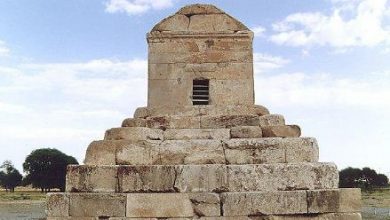
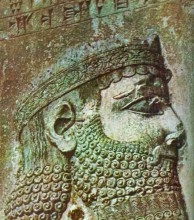
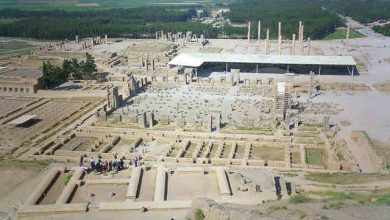
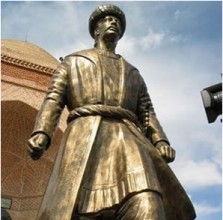
Another very old people in the Nemin region were the "Kadusians", who were later called Guls, Kadusians or "Caspians", etc., who were related to the "Cutians" and Kasians.. They were not Asian, and long before the Kasi and Aryans, in the time that is called the "heroic era and the era of ancient nomads", they flowed from the other side of the Caucasus mountains to the southern regions and in the first encounter, Talash and its surroundings with hunting grounds. And they chose many fertile lands and settled in it. Among all the ethnic groups, the Kadusians are more durable in this region, so that even after the Arab invasion, their rulers came to power in this region, and it is almost certain that they spoke the old Talshi language..
At the time of the formation of Medes in Aturbatkan Mehr Baresti and later the Zoroastrian religion in this region (Namin and its surroundings) there have been. Mainly, until the advent of Islam, the residents of this region followed this religion, so according to the reference, the Mehranis were the survivors of the Mehr worshipers of this region..
The Caducees never obeyed the Medes, and the Nemin region, due to its proximity to the Caducees and the Khazrans, and the Medes themselves, witnessed the currents between these two governments..
The Cadusians were a people with a very strong fighting force who acted independently against the Medes. They maintained their power and independence even in the later periods to the point that the central government never managed to bring them under their command, neither during the Medes period nor during the Achaemenid period, nor even Alexander the Great.. As a result, "it became necessary for Athurpatkan leaders to respect the Kadusians." . According to historians, Cyrus was the only one who was able to subjugate the tribes of these regions, especially the Cadusians, and they obeyed Cyrus for the first time.. However, under the influence of the concentration of power that he created throughout Iran, Darius I was able to satisfy the tribes around the Caspian Sea and west of it, but he did not bring them under complete obedience..
In the study of the events during the reign of Darius III, the last Achaemenid king, it is clear that the Kadusians and tribes living in the Nemin region, who were mixed with the Medes, were sometimes with the Medes and sometimes with the Achaemenid government..
But after the Achaemenids, the lands along the Caspian Sea were not under the command of the Seleucids. Despite this deep influence of the Greek language, script and legal seals in Atorpatkan, it is clearly clear that especially Greek-style urban planning became popular in this area..
From the Ashkan period, historians do not know much about this region due to the destruction of the works of this period at the hands of the Sassanids. (I will not) introduces.
From the Sasanian period, which is the period when the Zoroastrian religion was formalized, there was a large fire temple in Mount Shindan around Nemin, which belonged to the Sasanian period..
Peace be upon you;
I really enjoyed this text and writing and I am very happy that there are people like you who take their time and feel responsible for their history, culture and people.. We are happy to have people like you among us
First, Cyrus destroyed the Cadusians, then he destroyed the Medes, who were among the ancient tribes of this region…But in the end, Cyrus was killed by Anna, a woman from the Medes
Well, Porpirar died and went away and was relieved, now it is time for Ghiyasabadi!
A total insult and then moral consequences: That was appropriate for the text?
Hello – I have a question that in the story of King Arte and Kadosian, was Arte the same as King Artaville or Ardebil? That was the place of the Medes?
The second question: There is a village in the east of Ardabil near Gilan and Astara. It is called Gollo. It has a hill and the village is on that hill. It is said that this hill dates back to the time of the Kadusians.. It is true?
Your son was born in 1972!!!!! While the years of research of Mr. Doctor are more than your life span.
So woe to the doctor ! that I so easily blew the research of his whole life!
Please don't distort history, Cyrus the Great would never have done such a thing. Do you think Cyrus the Great, who wrote the Charter of Human Rights, or the one who respected the Assyrian God, could have done such a thing?
Cyrus never did such a thing because his Iranian and divine beliefs did not allow him to do so (ع) He saw that he ordered Malik Ashtar not to kill Muawiyah !!Then Cyrus the Great, who is known as Zulqarnain Adil, can destroy a place?
Have you read the article at all?
Blessings and peace to you
If the Kadusians, i.e. my predecessors, are destroyed, of course, my family and the lowly smuggled servant of the Talash people are alive.
Talshan is a remnant of the Kaduvasianeh people
Peace be upon you
Rightly, it was a strong response to Mr. Ghiyasabadi's exaggerations
few questions:
1- Is this gentleman's book licensed by the Ministry of Guidance and can it be found in bookstores?(If the answer is positive, I can only say that it is like bloodshed in the history of Iran and woe to us)
2- Mr. Ghiyasabadi, where are you from?
درود
Unfortunately, Saeed Jan, I have no information
Their origin is related to the village of Ghayasabad Farahan in the north of Arak
As they say, they have Turkish roots in the villages around that area
******
Manager's note:
Links to other sites are prohibited
Thank you for your useful and decisive and valuable answer
I myself am Talshi, actually from the Kadusi race. I do not accept the fact that it is said that the Caduceus have disappeared from history
In my opinion, Kadus has not disappeared from history. Please don't get me wrong